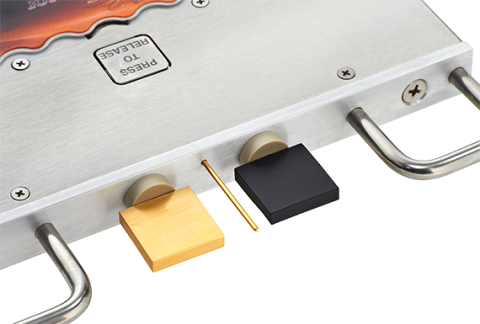Whether you’re producing loaves of artisan bread, cookies, or delicate pastries, every second in the oven counts. Getting the bake-time just right affects not only the taste and texture of your products but also your bottom line. If you bake for too long, you risk drying out or burning your products. If you under-bake, you’re dealing with inconsistent textures and potential food safety issues. Heat flux profiling for improving bakery efficiency from Reading Thermal can help you ensure your baking time is exactly what it should be by harnessing thermal energy data.
Using thermal energy data to guide baking time decisions can help bakeries achieve consistency, reduce waste, and improve overall efficiency. With tools like Reading Thermal’s SCORPION® 2 Profiling System, bakeries can gain detailed insights into how heat is transferred to products during baking – and use that data to optimize the entire process.
Understanding Thermal Energy in Baking
At its core, thermal energy is the heat energy that is transferred to your product inside the oven. It affects how quickly the internal temperature of your dough or batter rises and ultimately determines how evenly and thoroughly the product bakes. Traditional temperature monitoring gives you a general idea of oven conditions, but it doesn’t show how that heat is actually interacting with your product. That’s where thermal profiling comes in.
Reading Thermal’s Heat Flux Sensor, part of the SCORPION® 2 System, provides a deeper layer of insight. It measures the actual energy transfer to your product in real time. This information allows you to see exactly how much energy is being delivered at each stage of the bake and how that impacts the final product.
Fine-Tuning Baking Times with Heat Flux Data
When you know exactly how much thermal energy your product receives, you can make more precise decisions about bake-times. For example, if you’re producing a batch of muffins and notice that they’re consistently browning too quickly on top while remaining doughy in the center, your heat flux data can reveal whether too much energy is being transferred early in the bake. You might need to adjust your oven temperature-profile or reduce the baking time slightly to ensure a better result.
On the other hand, if a product is taking too long to reach its final internal temperature, heat flux profiling can help identify whether the oven isn’t delivering enough energy or if there’s a problem with airflow, insulation, or burner efficiency. The ability to pinpoint exactly where the thermal energy is going – or isn’t going – enables you to make targeted adjustments without resorting to trial and error.
Improving Efficiency Without Sacrificing Quality
Optimizing baking time isn’t just about quality but also efficiency. Shorter, more accurate bake-times mean you can increase throughput without compromising consistency. That’s especially important in high-volume operations, where shaving off even a few seconds per batch can lead to significant productivity gains over time.
With the SCORPION® 2 Profiling System, you get not just real time measurements but also historical data you can use for trend analysis. This helps you create a standardized-baking profile for each product type, ensuring that every batch comes out the same, no matter who’s working the oven or what shift is running.
Learn more about heat flux profiling for improving bakery efficiency by calling Reading Thermal at (01) 610-678-5890 or contacting us online.

